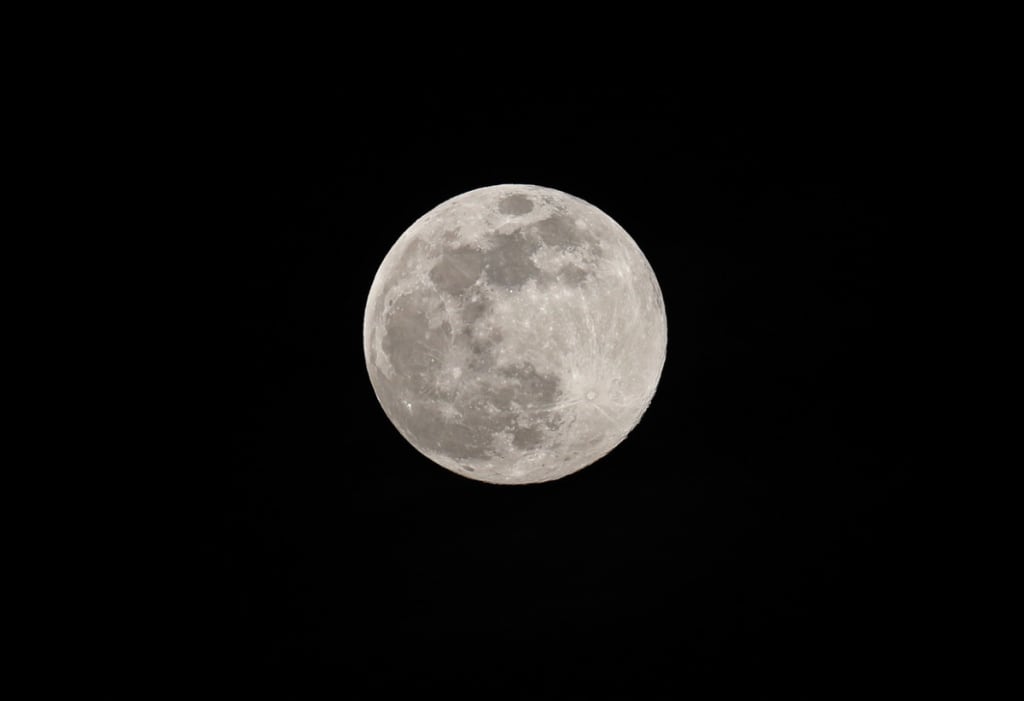
This year's March Full Moon, which falls on March 25, is a mysterious and magical night. This moon, known to the Native American tribes in the north as the Full Crow Moon, signifies the end of winter and the ceaseless cawing of crows. Because of the way the snow covers get crusted from falling throughout the day and then freezing at night, it is also known as the Full Crust Moon. We have the strongest desire to express ourselves, strengthen our bonds with others, get rid of negative people in our life, and make positive changes during the full moon. March's Full Moon is approaching as the temperature gradually rises, the ground starts to melt, robins return, and earthworms start to appear.
The March Full Moon's History
Typically, the moon in March is a "super moon." Astrologer Richard Nolle coined the phrase in 1979 and stated that it refers to a new or full moon that is near Earth. The Full Moon in March is also referred to as the Crow, Worm, Crust, Sap, and Sugar Moon. Crow Moon got its name from American tribes in the Northwest who remarked that crows often cawed during the moon.
The snow crust that freezes at night gave rise to the moniker "Crust Moon" from other parties. Some refer to it as the Sap or Sugar Moon since it coincided with an early spring, when maple trees should be tapped. According to the Hebrew calendar, the full moon occurs in the middle of Nisan, which is when Passover is observed. This feast commemorates the Jewish people's escape from Egyptian slavery as well. This full moon falls on the same day as Holi, a Hindu holiday celebrating the victory of good over evil.
The upcoming lunar phase in March is known as the "full moon."On Monday, March 25, at 3 a.m. EDT (0700 GMT), it will happen.
When the moon is fully illuminated by the sun as viewed from Earth, it is said to be full.
"This is as close as we come to seeing the sun's illumination of the entire day side of the moon (so, technically, this would be the real half moon)," according to NASA's moon guide. "The moon is opposite the sun, as viewed from Earth, revealing the moon's dayside."
The full moon seems to be full even before it reaches its last stage. A casual observer may perceive it as full for a few days prior to and following the actual.
What's A Complete Moon?
When the Moon appears to be completely lighted from Earth's perspective, it is said to be in its full phase.
This happens when a straight line is formed by the alignment of the Sun, Earth, and Moon. On the exact opposite sides of the Earth are the Sun and the Moon. When the Sun is in this position, it immediately illuminates the area of the Moon that is visible to humans, forming a complete, brilliant circle of light.
This phase occurs at roughly the middle of the lunar cycle (29.5 days), approximately 15 days following the New Moon. In theory, it is only deemed "full" on a single day. No matter how full it looks to be, it is either waxing or fading before and after that.
A Full Moon During the Day?
As previously said, the Moon is only regarded as full for a brief moment, even if it may appear full to you a few days before or after the precise time we list above. In certain places around the planet, this peak illumination could happen during the day. Find out more about this occurrence.
Does Your Behavior Change During a Full Moon?
Although opinions on how the moon affects our emotions and physical health are divided, a number of research papers and firsthand accounts attribute various negative effects of the moon, including lack of sleep and an increase in crime and injury. What are your beliefs? (You can share your story in the comments section below.)
About the Creator
SUGANYA R
I am worker, i live ordinary life, i love to sing and i love go out different places, i having hobby to capture of good photos, love to eat.





Comments
There are no comments for this story
Be the first to respond and start the conversation.